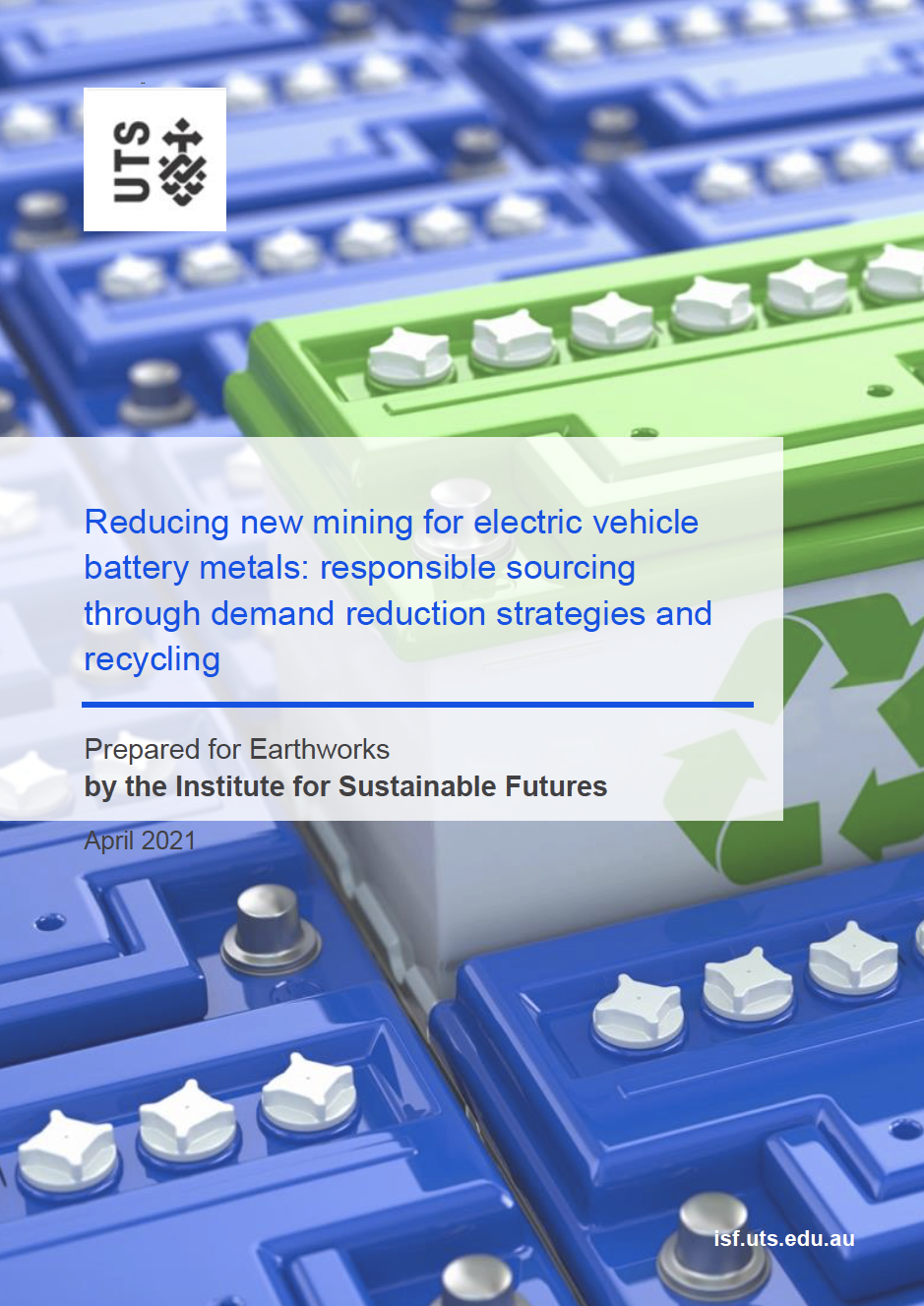This research investigates the current status and future potential of strategies to reduce demand for new mining, particularly for lithium-ion battery metals for electric vehicles.
This study is focused on four metals which are important to lithium-ion batteries:
- Cobalt
- Lithium
- Nickel
- Copper
In order to meet the goals of the Paris Climate agreement and prevent the worst effects of catastrophic climate change, it will be essential for economies to swiftly transition to renewable energy and transport systems. At present, the technologies required to produce, store and utilize renewable energy require a significant amount of materials that are found predominantly in environmentally sensitive and often economically marginalized regions of the world. As demand for these materials increase, the pressures on these regions are likely to be amplified.
For renewable energy to be socially and ecologically sustainable, industry and government should develop and support responsible management strategies that reduce the adverse impacts along the material and technology supply chains.
There are a range of strategies to minimize the need for new mining for lithium-ion batteries for electric vehicles, including extending product life through improved design and refurbishment for reuse, and recovering metals through recycling at end of life.
For example, we found that recycling has the potential to reduce primary demand compared to total demand in 2040, by approximately 25% for lithium, 35% for cobalt and nickel and 55% for copper, based on projected demand. This creates an opportunity to significantly reduce the demand for new mining. However, in the context of growing demand for electric vehicles, it will also be important that other demand reduction strategies with lower overall material and energy costs are pursued in tandem with recycling, including policy to dis-incentivize private car ownership and make forms of active and public transport more accessible.
While the potential for these strategies to reduce demand is currently not well understood; this report provides insights into the relative merits, viability, and implications of these demand reduction strategies, and offers recommendations for key areas of policy action.
Other Languages
- French: Réduction des nouvelles exploitations minières pour les métaux des batteries de véhicules électriques : approvisionnement responsable grâce à des stratégies de réduction de la demande et au recyclage
- Indonesian: Mengurangi penambangan logam-logam baterai kendaraan listrik: pencarian sumber yang bertanggungjawab melalui strategi pengurangan permintaan dan daur ulang
- Portuguese: Refreamento na extração de metais para baterias de veículos elétricos: estabelecer fontes de fornecimento responsáveis por meio de estratégias de demanda e reciclagem



